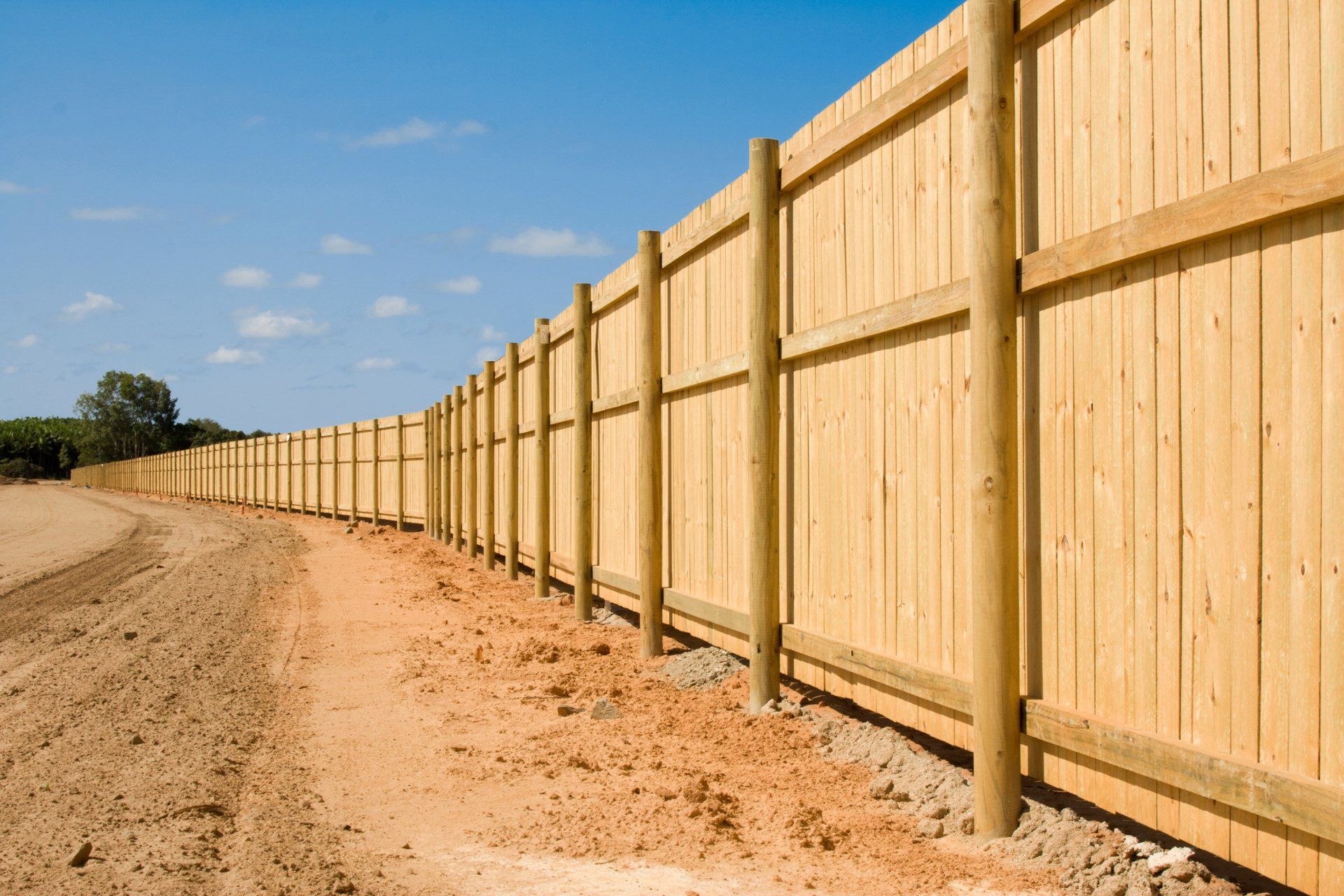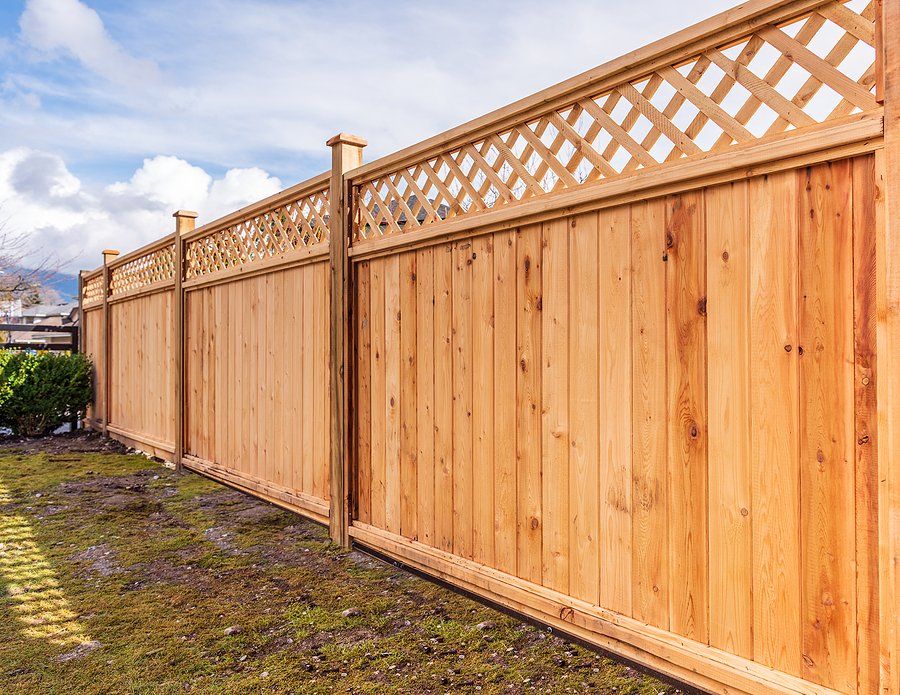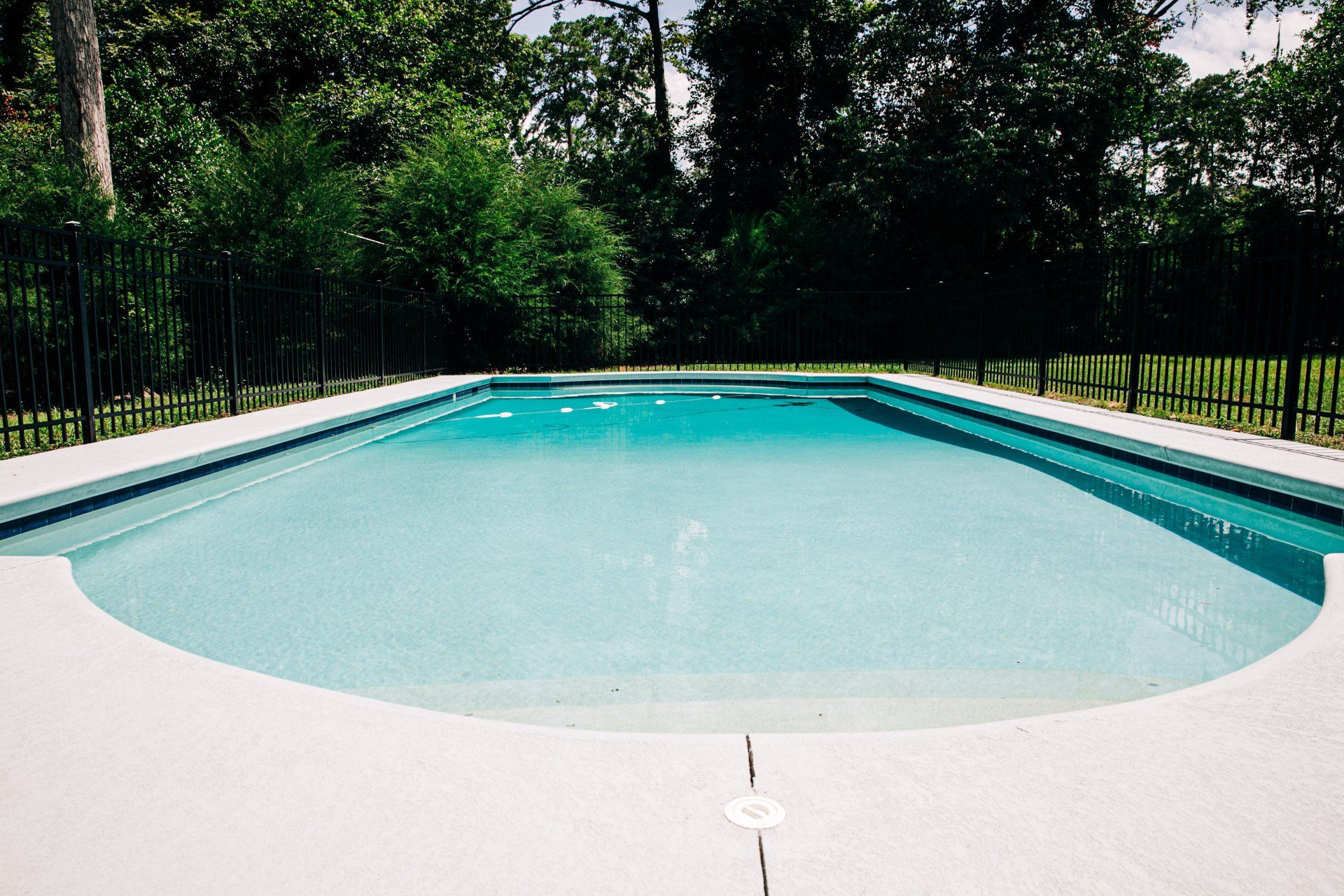How to Stain a Fence
When Is the Best Time to Stain a Fence?
We see that many people choose to stain their new wood fences in the late spring or summer, although these are actually some of the worst periods of the year for fence staining. Wood absorbs humidity naturally. It begins to get very humid in Cincinnati in late spring and early summer. If you stain a deck or fence in too high of humidity, the wood pores may get excessively saturated, making it harder for the sealant to penetrate. The intense heat of summer might cause the stain to evaporate before it has a chance to penetrate the wood and seal off moisture. The best time to stain a fence is when both the air and wood surface temperatures are between 50 and 90 degrees. You want to avoid applying stains in direct sunlight, and you should wait until the weather is rain-free for at least 48 hours.
Why Stain a Wood Fence?
There are multiple benefits to staining a wood fence. Especially recently, as expensive as wood has been, you want to ensure you protect your investment for as long as possible. Some of the key benefits include:
Rot Prevention
Unstained wood will absorb moisture. Over time, excessive moisture will begin to cause softening and rot in your wood fence. If wood rot is left too long, it can require extensive repair and replacement to ensure your fence remains sturdy.
Limit UV Fading
Over time the rich, bright tones of a new cedar fence will dull and fade as it is exposed to the sun.
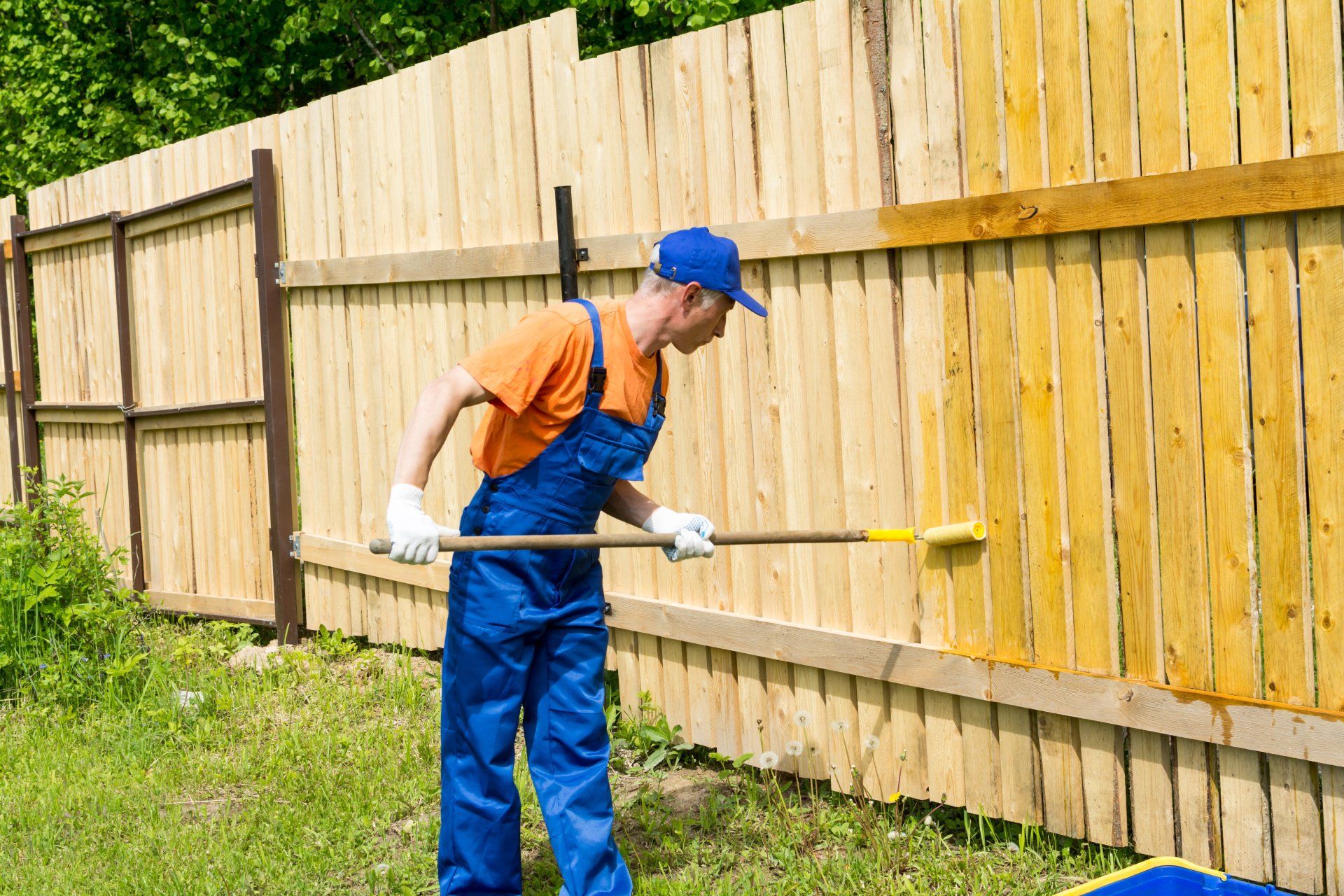
Helps Prevent Splitting
It's possible that if water seeps into the pores in your fence and freezes, it can cause significant difficulties such as splitting. Fence stain helps seal these pores to prevent the intrusion of water.
Enhance the Look
Staining your cedar fence enhances the aesthetic of your fence by highlighting the natural wood grain. Your fence will look fantastic, but it may also assist in raising the value of your home!
Increase the Lifespan
Staining a fence helps prevent the natural deterioration of wood over time. Keeping your fence stained is a great way to help improve the longevity of your investment.
How to Stain a Fence
When you're ready to stain your fence and you've found the right days with good weather, you'll first want to ensure that your fence is clean of any dirt, debris, and mildew. Depending on how dirty the fence is, you can use a pressure washer to help expedite the process. You may need to use a diluted bleach and water solution for tougher stains. After cleaning, ensure the fence is 100% dry before proceeding. Suppose there are any blemishes or holes in the fence slats. In that case, you can apply a stainable wood filler available at most hardware stores. Next, you'll want to protect any nearby vegetation or landscaping with a drop cloth. Now, it's time to begin staining! You can stain a fence with a brush, a roller, or a sprayer.
- If you opt for a brush, you'll first want to coat any horizontal slats of the fence from left to right with the tip of the brush dipped in a can of stain. After that, make your way down the whole length of each vertical slat from top to bottom, keeping the brush tip moist. To avoid the formation of lap marks, stain one to two slats at a time. Stain the end grain after you've reached the bottom of a slat.
- If using a roller, use a medium nap roller cover and soak the nap entirely with the stain. Apply the stain in two to three-foot sections of fence at a time, making sure to use a large brush to back-brush or re-paint over any exposed areas left by the preceding stroke. This will allow the stain to contact hard-to-reach crevices and nooks while also ensuring an even application without lap marks.
- If using a sprayer, make sure you stand back a comfortable distance and apply the stain in two to three-foot sections of fence at a time using a consistent up and down motion.
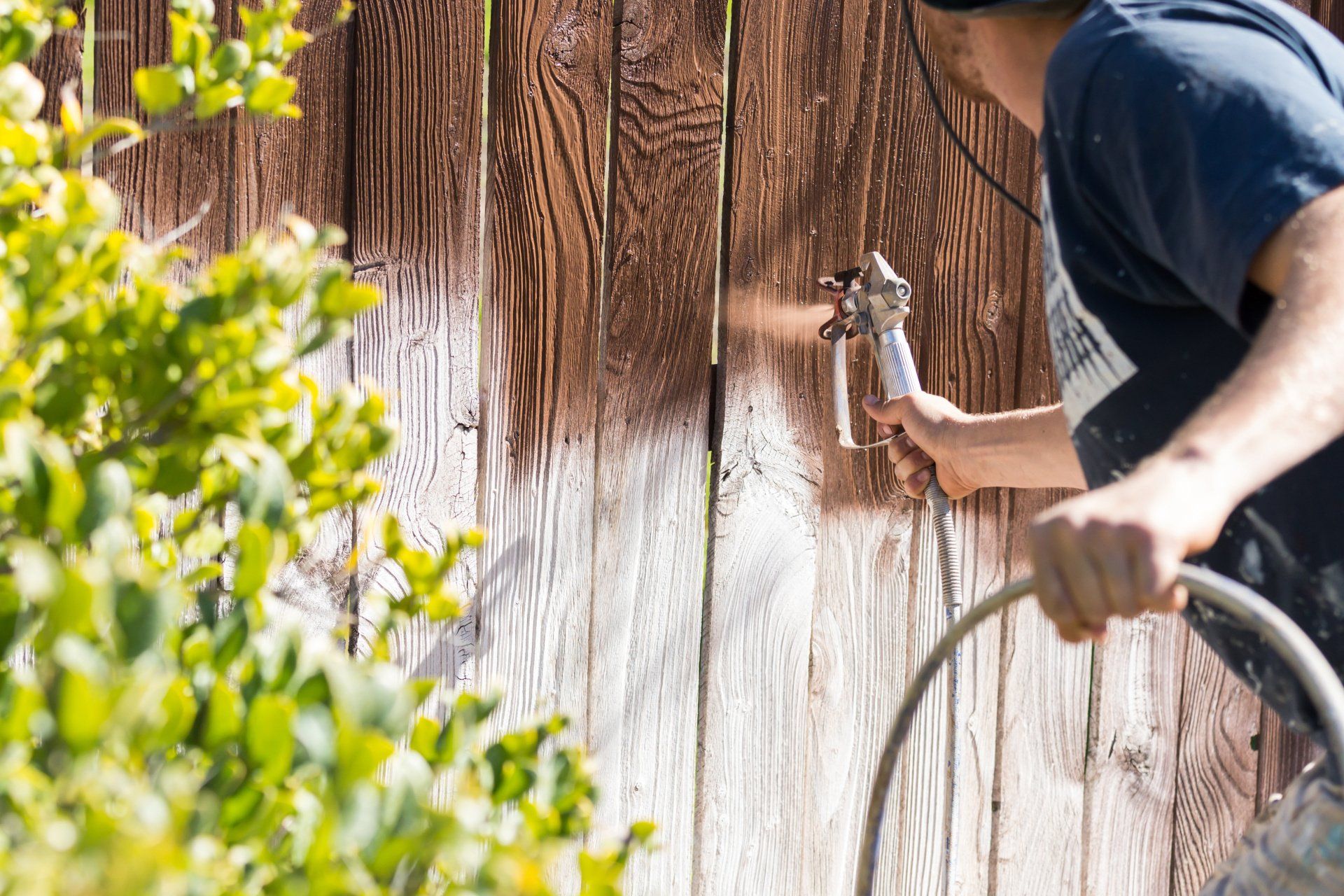
After the fence has been stained, let it dry fully and determine if you need any additional coats. As needed, apply additional layers of stain to get the desired color depth. A single application should be enough for a fresh wood fence or one that will be sealed.
While a good quality stain can preserve your fence from normal wear and tear, sealing it with a strong sealer will help to prolong the finish—and the life of your fence. Apply a single layer of clear, weatherproof sealant using a brush, roller, or sprayer for optimal results. Quickly, back-brush unsealed grooves and recesses with a broad brush to obtain a homogeneous look. Allow for thorough drying of the sealant.
Don't hesitate to reach out to Cincinnati Fence Co for any questions and for a fence installation or fence repair quote. We're standing by to take your call 513-808-4236.
Book a Service Today
We will get back to you as soon as possible
Please try again later
You might also like
Fencing Tips, Tricks, and Updates from Cincinnati Fence Co
SPEAK TO A TEAM MEMBER TODAY
Copyright © 2024 All Rights Reserved

